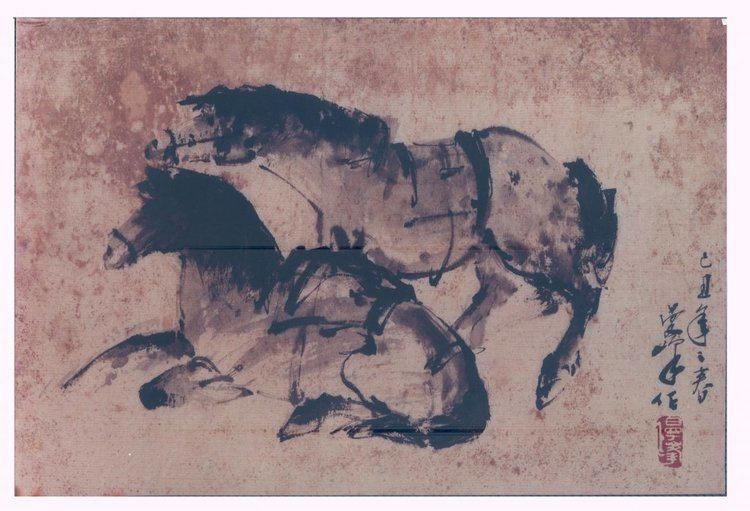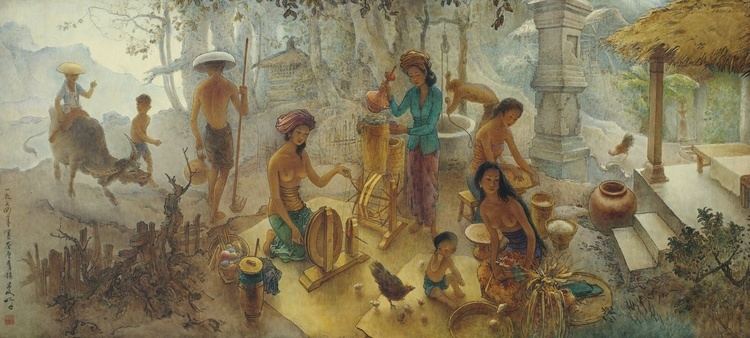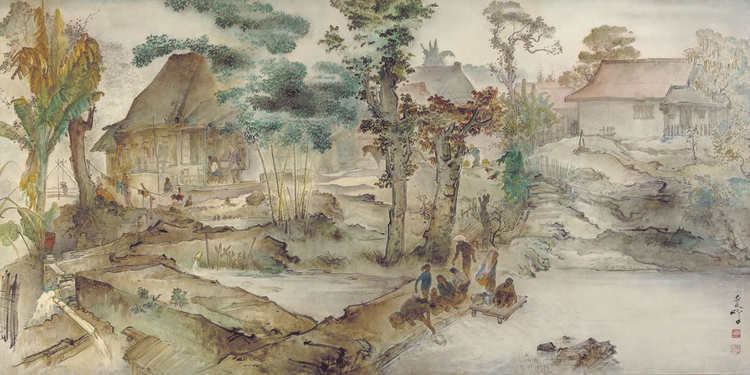Name Lee Fong | Role Artist | |
 | ||
Books Lee Man Fong Fine Selection: SooBin Art Gallery, 10th Anniversary & Inaugural Exhibition, 12-21 May 2000 | ||
Lukisan Lee man fong, pelukis maestro Indonesia
Lee Man thong (Chinese: 李敏峯; pinyin: Lǐmǐnfēng; Jyutping: lei5 man5 fung1; born November 14, 1913 – April 3, 1988) was a painter born in Guangzhou, China. His father, a merchant with ten children, brought him to Singapore. When his father died in 1930, Man Thong had to work hard to earn a living for his mother and siblings using his skill in painting ads and artwork. However, that was not enough for him. In 1932, he moved to Jakarta, Indonesia. The tension between nationalist groups such as Persagi (Persatuan Ahli-ahli Gambar Indonesia, or Association of Indonesian Draughtsmans) and Indische-Holland kunstkring community stimulated him. In 1942, Man Thong was jailed because of his opposition to Japanese colonialism in Indonesia. After six months in jail, Takahashi Masao helped him gain freedom. This Japanese officer was interested in his artistic potential.
Contents
- Lukisan Lee man fong pelukis maestro Indonesia
- Lukisan karya lee man fong pelukis maestro legendaris indonesia yang lahir di tiongkok
- References
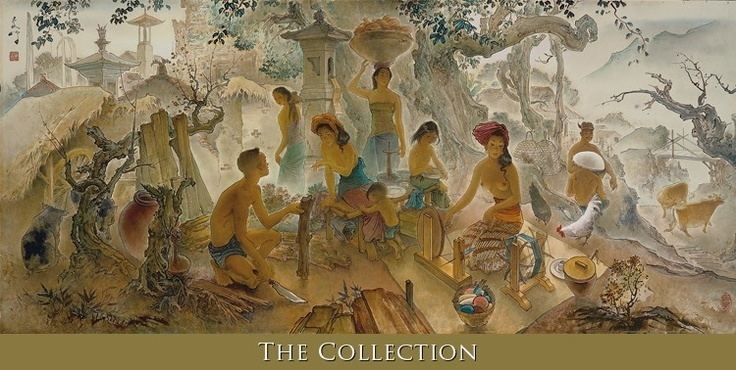
In 1946, President Sukarno heard about him when he had his solo exhibition in Jakarta. Sukarno then knew that Man Fong was given a Malino scholarship from Van Mook, the Netherlands lieutenant-governor general. In Europe, many of his exhibitions were successful. He briefly returned to Indonesia, and went back to hold exhibitions from Den Haag to Paris. In 1952 he returned to Jakarta. The visit from Sukarno and Basuki Abdullah, the official palace painter at that time, encouraged him to establish Yin Hua in 1955. Yin Hua was an organization of Chinese painters that had its office on Lokasari Street, Jakarta. Many art exhibitions were organised by Yin Hua. In 1956, Yin Hua was invited to hold exhibitions in China.

The relationship between Sukarno and Man Fong improved. His beautiful and perfect works matched with Sukarno's taste. For him, Man Thong's art was an escape from revolutionary spirit. Sukarno didn't have any particular theme preference in art. Only ten percent of all his collections had a nationalist theme. "A thing of beauty is a joy forever," was his remark about his taste on art. Therefore, when Basuki Abdullah suggested to him to appoint Man Fong as the next presidential painter, Sukarno agreed to it without hesitance.
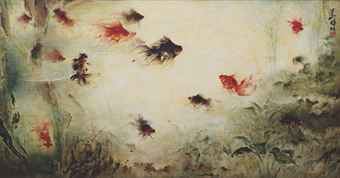
Source: Kompas, June 1, 2001, an article by Agus Dermawan T.

Lukisan karya lee man fong pelukis maestro legendaris indonesia yang lahir di tiongkok
